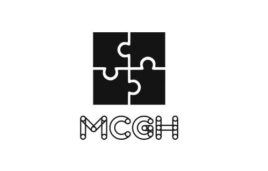
by chrisdofdof | Jan 25, 2024 | Main-Story-2
Artificial intelligence (AI) is transforming the healthcare industry in unprecedented ways. From diagnosis to treatment, from research to management, AI is enabling new possibilities and improving outcomes. Here are five things to expect from AI in healthcare in 2024:
- AI will augment human doctors, not replace them. AI can assist doctors with tasks such as analyzing medical images, generating reports, recommending treatments, and monitoring patients. However, AI cannot replace the human touch, empathy, and ethical judgment that doctors provide. AI will enhance the capabilities of doctors, not threaten their jobs.
- AI will personalize medicine and improve patient experience. AI can help tailor treatments and interventions to each patient’s specific needs and preferences. For example, AI can use genomic data to identify the best drugs for a patient or use behavioral data to nudge a patient to adhere to a treatment plan. AI can also improve patient experience by providing chatbots, virtual assistants, and telemedicine services.
- AI will accelerate drug discovery and development. AI can help discover new drugs and test their efficacy and safety faster and cheaper than traditional methods. For example, AI can use natural language processing to mine scientific literature, use computer vision to screen compounds, use machine learning to predict drug interactions use deep learning to design new molecules.
- AI will improve healthcare operations and efficiency. AI can help optimize healthcare processes and resources, such as scheduling appointments, managing inventory, allocating staff, and reducing waste. For example, AI can use predictive analytics to forecast demand, use reinforcement learning to optimize workflows, use computer vision to monitor equipment use natural language processing to automate documentation.
- AI will democratize healthcare access and quality. AI can help overcome the barriers of cost, distance, and availability that prevent many people from accessing quality healthcare. For example, AI can provide low-cost diagnostic tools, remote consultation services, and online education platforms that can reach underserved populations and regions.

by Sylvester Addo | Jan 6, 2021 | Azure, Developer, General, Other News
You go to a shop, purchase an item and want to pay with M-PESA. You look around to find the notice with the till number and take turns looking up and down to enter the number on your phone. More often going over the number one more time or twice if you got it wrong initially. We’ve all been there, especially when you are in a haste.
How will you like a situation where you can just launch the Safaricom, KCB, Equity, I&M or your bank or Sacco’s app and using your camera it gets you that information? You only enter the amount you are paying, your pin number, et voilà you are set to go.
Unfortunately, Safaricom doesn’t have that feature in their app yet. The app, however, allows customers who prefer to use the voucher card to scan the 16 digits and it will automatically pick the digits.
That might change soon with this genius innovation from Jama Mohamed. A Business Information and Technology student graduate of Strathmore University.
Jama created an android detection library that uses Microsoft Azure Computer Vision service Read API to detect M-PESA business account numbers from images.
With this, it will be easier, faster and more accurate than typing an M-PESA paybill and till number. It is also able to know the exact category the image falls under, so no mix match there.
The software engineer’s open source project opens the door for financial service organizations in Kenya using the M-PESA API to add this plug and play android library to their app. Making it easier for customers using their app to use this functionality for payments.
Computer vision innovation
Jama shares the idea for the project came after having to confirm about five times for something he was purchasing.
I was purchasing something from the web that had M-PESA paybill as a payment option. The account number was a long randomly generated string that I basically had to confirm like five times.
And that’s where the idea came from, just to take some form of picture and use machine learning to extract information that was important.
The idea was to get these details a little faster than just typing them all the time since some businesses don’t have QR codes.
Hopefully, Kenyan financial organizations will add Jama Mohamed’s library to their app. Or work with him to create a unique one. So that next time you open your Standard Chartered, KCB, Equity, Ecobank, etc. or Safaricom app to pay for a purchase you just use your camera.
Jama welcomes contributions from other developers to improve the library. Check out the library on GitHub.
[jetpack_subscription_form show_subscribers_total=”false” button_on_newline=”false” submit_button_text=”Hi, sign up
so you can get the latest
in breaking news,
reviews, opinions, events,
opportunities and
community updates
right in your inbox.” custom_font_size=”16″ custom_border_radius=”0″ custom_border_weight=”1″ custom_padding=”15″ custom_spacing=”10″ submit_button_classes=”” email_field_classes=”” show_only_email_and_button=”true”]
Check out other stories making the news across Africa and Middle East region.






